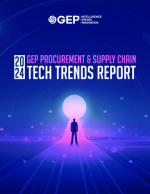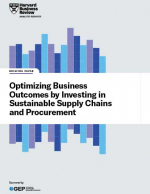10 Crucial Steps to Prepare Your Supply Chain for The Circular Economy
This paper is a must-read for procurement leaders looking to revamp their approach to sustainability using a circular model, to reimagine your approach to supplier relationships, sourcing materials, product life cycles, recycling , and business plans.
Sustainability Planning
As a CPO, you need an action plan for sustainability.
With a circular model, you can reimagine your approach to supplier relationships, sourcing materials, product life cycles, recycling (downcycling and upcycling), and business plans.
Circular Sustainability
The world is rapidly shifting toward sustainable practices in which the circular model plays a key role and disrupts the supply chain as we know it.
A circular approach to sustainability challenges how organizations currently approach supplier interactions, sourcing materials, product lifecycles, recycling (downcycling and upcycling), and business models.
Circularity is not limited to the reduction of environmental impact and optimization of resources. It includes product design, shifting from cradle-to-grave to cradle-to-cradle (C2C).
Given current discussions around public policy on sustainability and circularity in the EU with the Green Deal as its backbone, organizations should start preparing and assessing the impact of their response on their operations in Europe and the rest of the planet
Circular sustainability models hold a great deal of promise, but how are they successfully implemented?
This GEP white paper - 10 Crucial Steps To Prepare Your Supply Chain for the Circular Economy - can help you take your sustainability initiatives to the next level.
What’s Inside:
- Follow circularity and sustainability guidance, principles, and legal frameworks at a global, regional, and local level
- Include circularity within the enterprise’s overall ESG targets
- Promote partnerships and collaborations to accelerate circularity’s adoption
- Establish processes that include circularity while executing activities across the supply chain
- Determine tech capabilities that enable the enterprise to gain visibility and take action across the supply chain
- Ensure that the transition is cross-functional and encompasses the entire business
- Secure access to expertise and market intelligence
- Assess the materials used in your supply chain and the life cycle of finished goods and services for opportunities
- Explore alternative commercial models with suppliers and promote innovation
- Shift towards circularity, assess the results, and leverage your position to impact the bottom line
The 10 essential steps above reveal that it is impossible to think about circularity without mapping and deeply understanding your supply chain and its stakeholders.
Circularity is a complex topic for both internal and external supply chain leaders. Internally, challenges arise due to the lack of necessary technological capabilities and collaboration.
Externally, consumers’ changing habits and, in some markets, a rapid modification in regulatory frameworks, add to the challenges.
Nevertheless, circularity also represents an opportunity to reorganize the business, redefine priorities, optimize resources, reduce costs, create new revenue streams, and become future-proof.
This paper is a must-read for procurement leaders looking to revamp their approach to sustainability. Download Now!
What’s Related




Favorites





